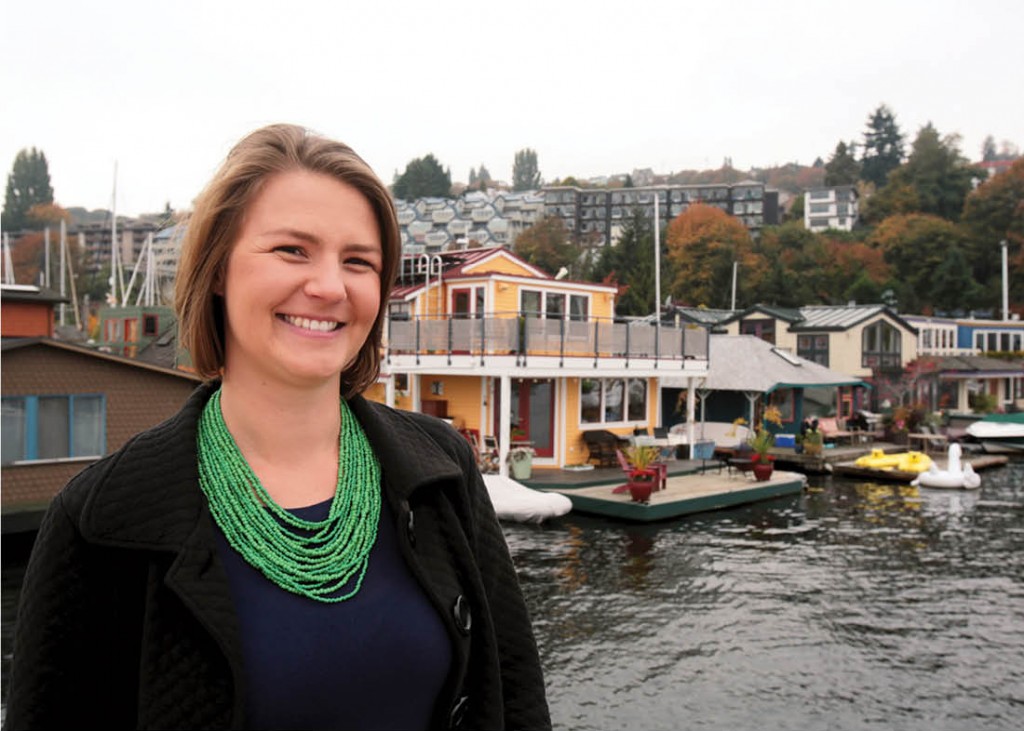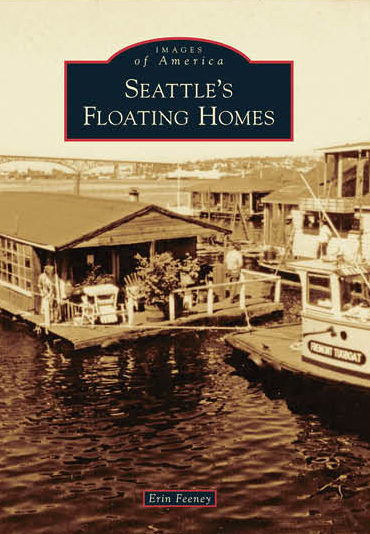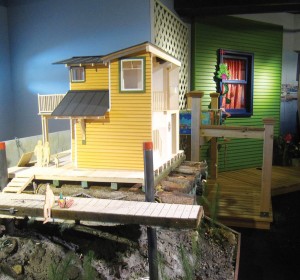The Complexity of Seattle’s Floating Homes Community

Erin Feeney, BA’07, did not have architecture in mind as a career when she first began her studies at Vanderbilt, but Dean Fräncille Bergquist and Professor of Art Michael Aurbach helped her fashion an interdisciplinary pre-architecture major once her interest took hold. Last December she graduated with a master of architecture degree from the University of Washington. In the process of completing her requirements, she published a book in the “Images of America” series called Seattle’s Floating Homes (2012, Arcadia Publishing), followed by an exhibit on the subject at Seattle’s Museum of History and Industry.
 Still Afloat: Seattle’s Floating Homes, which ran through Nov. 3, looks at the iconic community of floating homes on Lake Union made famous by the movie Sleepless in Seattle. The community, which has been around since the late 1800s, came about as a form of affordable housing for logging-industry laborers, who created homes on discarded logs.
Still Afloat: Seattle’s Floating Homes, which ran through Nov. 3, looks at the iconic community of floating homes on Lake Union made famous by the movie Sleepless in Seattle. The community, which has been around since the late 1800s, came about as a form of affordable housing for logging-industry laborers, who created homes on discarded logs.
“It’s more complex than the Sleepless in Seattle image,” Feeney says. “It comes out of a blue-collar tradition. They’re not just all homes of the rich.”
Feeney’s interest in vernacular architecture and urban sustainability issues grew out of her year as a Michael P. Keegan Traveling Fellow at Vanderbilt, traveling through Europe, South America, East Africa, China and Thailand. “That was an incredible experience,” she says. “I became interested in the sustainability of cities and urban communities—how we’re becoming more disconnected from traditional communities and how that’s affecting design for cities.”
A class project concerning vernacular architecture in Seattle led her to research the community of floating homes. “What was interesting to me was that it looked like any other community dealing with rising real-estate values, gentrification and security issues.”

Putting together the exhibit was more difficult than she had envisioned. Feeney constructed a scale-model cutaway of a floating home and recorded interviews with older residents about the history and future of the community, in addition to exhibiting maps and photos.
“We had to be creative,” she says. “It wasn’t about stuff; it was about people and their lives. Finding ways to convey that was a challenge.”
Now working toward becoming an architect, Feeney would like to stay connected to the floating homes community. “Several architects in Seattle have become floating-home architects,” she says, “but they’re all nearing retirement age. So, maybe I’ll be part of the next generation.”